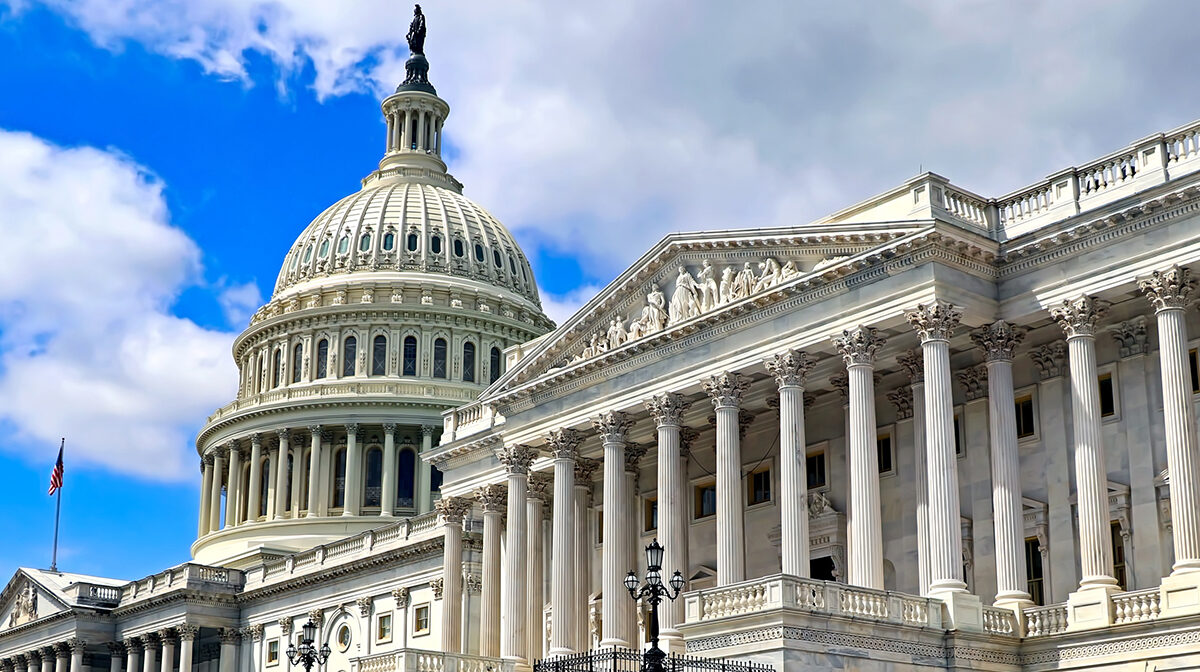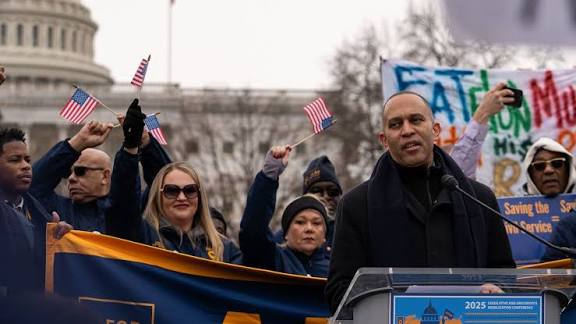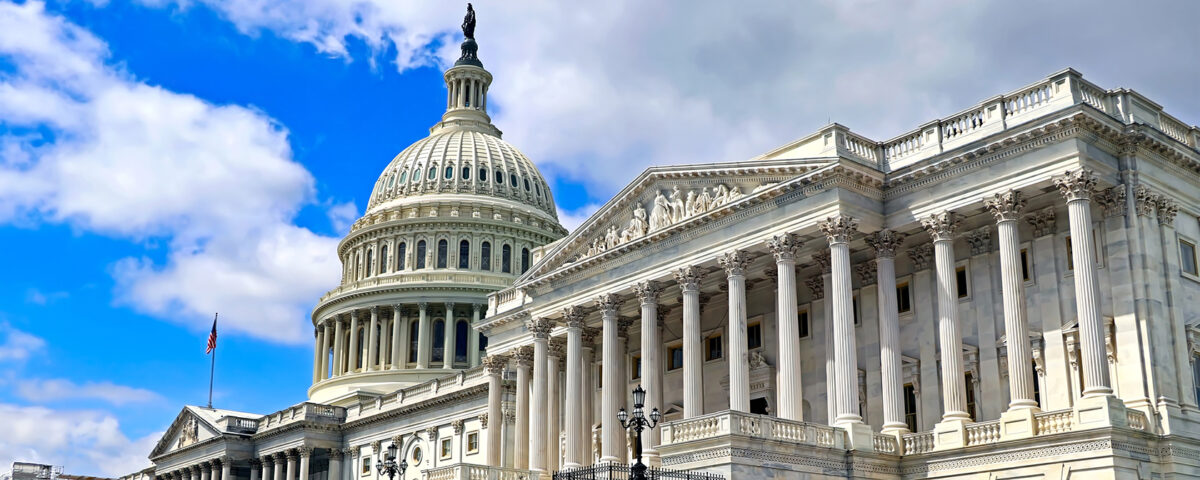Government shutdown update: Millions risk hunger and lost pay as Washington stalemate deepens

Congress deadlock pushes U.S. to brink of shutdown.
The U.S. government shutdown has entered its fourth week, and the fallout is spreading fast. With Congress still deadlocked and President Donald Trump abroad, critical federal programs, from food assistance to military pay, are nearing collapse. Lawmakers warn that the coming days could mark the most severe phase yet, affecting tens of millions of Americans and threatening the broader economy.
Democrats Hold Firm, Blame Trump for Prolonging the Standoff
Democratic leaders Chuck Schumer and Hakeem Jeffries are standing united in their refusal to reopen the government without concessions on health care funding. They insist that President Trump’s absence from negotiations has worsened the situation, accusing him of prioritizing foreign trips over domestic crisis management.
“This is all Trump,” said Senator Peter Welch of Vermont, pointing to the president’s overseas trip as a sign of disengagement. Meanwhile, Senator Mark Warner criticized Trump’s decision to travel abroad, saying, “Stay in America. Put America first. Sit down with us and work this out.”
Behind the scenes, Democrats believe that Republicans will feel the pressure first, especially as health care premiums rise and public frustration grows. But with no compromise in sight, the shutdown’s human cost continues to climb.
READ ALSO
Argentina Election shock: Milei secures landslide win amid economic turmoil
Can Trump legally run again? Steve Bannon claims there’s a secret 2028 plan for the 22nd Amendment
Millions at Risk as Food Aid Programs Run Out of Funds
One of the most immediate threats is to the Supplemental Nutrition Assistance Program (SNAP), which provides food aid to more than 42 million Americans. The U.S. Department of Agriculture confirmed it will not use its $6 billion contingency fund to extend benefits into November, meaning millions could lose access to food stamps as early as this week.
Democrats have accused the Trump administration of “weaponizing hunger” to push political goals, noting that funds exist but are being withheld. “Not a single American should go hungry,” said Rep. Jeffries, emphasizing that the administration still controls billions in emergency reserves that could sustain SNAP temporarily.
Meanwhile, Sen. Josh Hawley, a Republican, has introduced legislation to fund the program during the shutdown, but it remains uncertain if it will pass in time to prevent disruption.
Programs for Mothers and Children Face Shutdown Fallout
The WIC program, which supports about 7 million low-income mothers and infants, is also on the brink. The administration used emergency reserves earlier this month to keep payments flowing, but those funds will run dry by the weekend unless another $300 million is redirected.
At the same time, the Head Start program, serving over 800,000 children, faces closure in 41 states. More than 130 centers could lose funding, leaving teachers unpaid and classrooms dark. Lawmakers warn that the combined loss of SNAP, WIC, and Head Start will devastate vulnerable families who depend on these programs daily.
Federal Workers and Military Brace for Missed Paychecks
By the end of this week, thousands of federal employees will miss their first full paychecks, including TSA agents, air traffic controllers, and congressional staff. Many are already working without pay or have stopped reporting for duty, raising fears of disruptions to air travel and national security.
Members of the U.S. military could also miss their next payday unless the White House intervenes again. Earlier this month, Trump redirected $6.5 billion from military research accounts to cover salaries, but those funds are running low. The Pentagon recently accepted a $130 million private donation to help pay troops, a move that has drawn criticism and ethical concerns.
A Mounting Crisis as Washington Stalls
The shutdown, now one of the longest in U.S. history, shows no signs of resolution. Senate Majority Leader John Thune warned, “Things are about to get worse,” as deadlines for multiple programs converge around November 1.
Republicans have proposed short-term funding measures to reopen the government until late November, but Democrats continue to reject them, demanding a comprehensive deal that protects healthcare subsidies and social programs.
Unions representing over 800,000 federal workers are urging an immediate end to the standoff. “It’s long past time for our leaders to put aside partisan politics,” said Everett Kelley of the American Federation of Government Employees, calling for all workers to return with back pay.
As the stalemate drags on, economists warn of ripple effects through the broader economy, from delayed tax refunds to stalled infrastructure projects. If no deal is reached soon, experts fear the shutdown could trigger a recessionary slowdown and further erode public confidence in Washington.
FAQ
1. How long has the U.S. government been shutdown?
The current government shutdown has entered its fourth week, making it one of the longest in U.S. history, with no agreement yet between Congress and the White House.
2. Why is the government shutdown?
The shutdown stems from a standoff between Democrats and Republicans over health care funding and spending priorities. Democrats want guarantees for affordable care and social programs, while Republicans demand broader budget cuts.
3. Who is being affected by the shutdown right now?
Millions of Americans, including recipients of SNAP and WIC benefits, federal employees, military personnel, and parents relying on Head Start programs, are facing financial strain and service disruptions.
4. Will food stamps (SNAP) be funded in November?
As of now, the U.S. Department of Agriculture has confirmed it will not extend SNAP funding into November, leaving over 42 million people at risk of losing benefits.
5. Are military members still getting paid during the shutdown?
President Trump previously redirected funds to cover military paychecks, but the money is nearly exhausted. Future payments depend on whether the administration finds additional emergency funds.
6. How does the shutdown affect federal workers?
Many federal workers have already missed paychecks and may face furloughs or unpaid labor. TSA and air traffic control operations could slow down significantly if absenteeism increases.
7. What programs are most at risk?
Key programs nearing shutdown include SNAP, WIC, Head Start, and the Essential Air Service program for rural communities. These services could run out of funds within days.
8. Is there any progress toward ending the shutdown?
Currently, negotiations remain stalled. Democrats insist on health care protections before reopening the government, while Republicans are pushing temporary funding bills that have repeatedly failed in the Senate.




